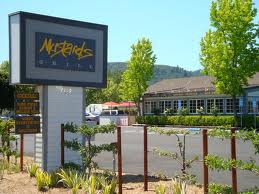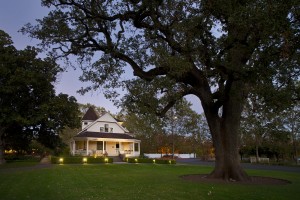In the 1970’s, just after the famous Judgement of Paris showed how great California wines had become, Steve went wine tasting for the first time. He remembers well the sensation, as he was driving along Route 29 in the Napa Valley, that he was in a wine shop only it wasn’t labels he was passing by but wineries. Domaine Chandon, Heitz, Louis Martini – all these famous places along the road! And every place offered something to taste and for free. It was wonderful.
In our travels, we have re-experienced that sensation many times and so can you. Each visit to a wine-growing region unknown to you brings back that same sense of an adventure about to unroll. Even with a GPS, you don’t really know where you are going. Very often, most of the wineries are not very well known to you. Maybe you have never heard of any of them. What should you do?
One option is to take a tour, but we do not recommend it. Tour operators are interested in volume, not quality. They choose wineries that can accommodate large groups, with wines that appeal to the mass market. It is better for them to offer wines that everyone can enjoy somewhat than expensive wines and expensive tastings that are oriented to connoisseurs. It is bad enough when 30 people show up at a winery all wanting to be served at once. It’s even worse when you’re in that group. You have no time for conversation, for learning, for savoring something unique. And you definitely won’t be offered that special wine they keep below the counter for those who are willing to spend more time to really understand a winery’s production.
The best bet is to get to the region you’re visiting and stop at the first winery you see. It may be a lucky hit, with knowledgeable people, lovely décor and fine wines. But even if it isn’t, it will have two things you want: a map and someone you can ask: “We’re new here. Which wineries do you suggest we try?” Almost without exception, we have found that wine people love to talk and love to give advice. Your taste may not be the same as theirs, so you might want to say, at your next stop, “The people at Chateau X recommended your wines. What can you recommend that might be a little different?” A truly helpful server should ask you, “Well, what kind of wine do you like?” and then direct you to light whites, heavy reds and everything in between.
Of course, this gets a little trickier when the region you are visiting is in a non-English speaking country. Fortunately, English has become the world’s second language so you can usually have a passable conversation. We have also engaged in a fair amount of arm-waving, map-pointing and general looking lost. It has always worked and we have often been directed to some of the most amazing wineries we have ever visited.
The great likelihood, when you’re tasting in a region you’re not familiar with, is that the wines aren’t going to be exactly what you think they’ll be. For example, a California Syrah is different from a French Syrah which isn’t the same as an Australian Shiraz. Moreover, a Southern Rhone Syrah is different than one from the north. You need not only to be open to these differences but to relish them. That’s what wine tasting is all about. It’s not a search for novelty for its own sake but rather to enjoy different winemakers’ expressions of the soil, the climate and the traditions of each locale. When you taste something unexpectedly wonderful, you’ve gotten a sense of what makes wine so fascinating: the variety, the personality, the subtlety and the achievement that each new harvest brings.
Sometimes, you’ll find wines made from grapes you’ve never heard of. Did you ever have an Insolia? It’s a wonderful white grape from Sicily that makes some of the most elegant white wines we’ve tasted in a while. How about Pinotage? Cannonau? Canaiolo? Open your mind when you open your mouth and you’ll get the most out of your visit.
Finally, make comparisons with wines you know, but only after you’ve finished for the day. If you say to yourself, “This is like XYZ Vineyards back home” you’ll always have the taste of XYZ on your mind and on your palate and you’ll find it hard to judge the wines you’re tasting on their own merits.
So, wherever you go, follow the open road. It leads to Wine Country.

